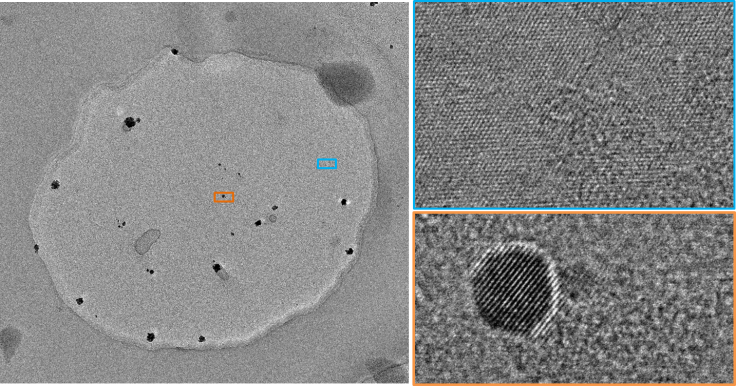Nanomaterials: Researchers capture fascinating images of individual atoms
Nanomaterials are microscopic materials used in manufacturing processes.

Researchers have developed a groundbreaking technique for observing and studying nanomaterials – microscopic or incredibly thin materials created on a very small, or atomic, scale that are being used in an increasing number of manufacturing processes.
The latest research, published in the journal Nano Letters, could help scientists develop better nanomaterials, which can enhance the performance of products in a huge range of applications.
As part of their work, the scientists captured fascinating images where individual atoms can be seen arranged in a lattice-type structure.
To observe the nanomaterials, the scientists created what is essentially a microscopic 'petri dish' – known as a graphene liquid cell - which can be used to view liquid samples at the single atomic level more effectively than current techniques allow.
Usually to image and analyse individual atoms, a technique called Scanning / transmission electron microscopy is used (S/TEM). However S/TEM instruments require the material to be placed in a vacuum, which dries it out, significantly altering whatever is being observed.
In much the same way that observing the structure of a dehydrated raisin under a normal microscope would not be the same as viewing the structure of the original grape, viewing materials using S/TEM can have its drawbacks.
"We know that drying out the structure can often completely change what we are looking at," Sarah Haigh, a leader of the study at the University of Manchester, told IBTimes UK.
"The graphene liquid cell is a method that we can use to image atomic structure without drying in vacuum."
Daniel Kelly, who was also part of the research team, added: "Unlike some previous designs, our graphene liquid cells allow us to image the atoms for many minutes. We were even able to resolve individual atoms in water and observe them dancing under the electron beam."
In the top right image, you can see the individual atoms that form the casing of the 'petri dish', which is made from graphene, a nanomaterial consisting of a single layer of carbon atoms. The bottom right image shows the atomic structure of a metal nanoparticle which measures just 20 atoms across.
Nanomaterials could be used to create everything from better-performing batteries to tougher tools and water-repellent, antibacterial coatings for clothes.
Furthermore, nanomaterials offer some exciting possibilities in the medical field, where they could be used for targeted drug delivery among other applications.





















